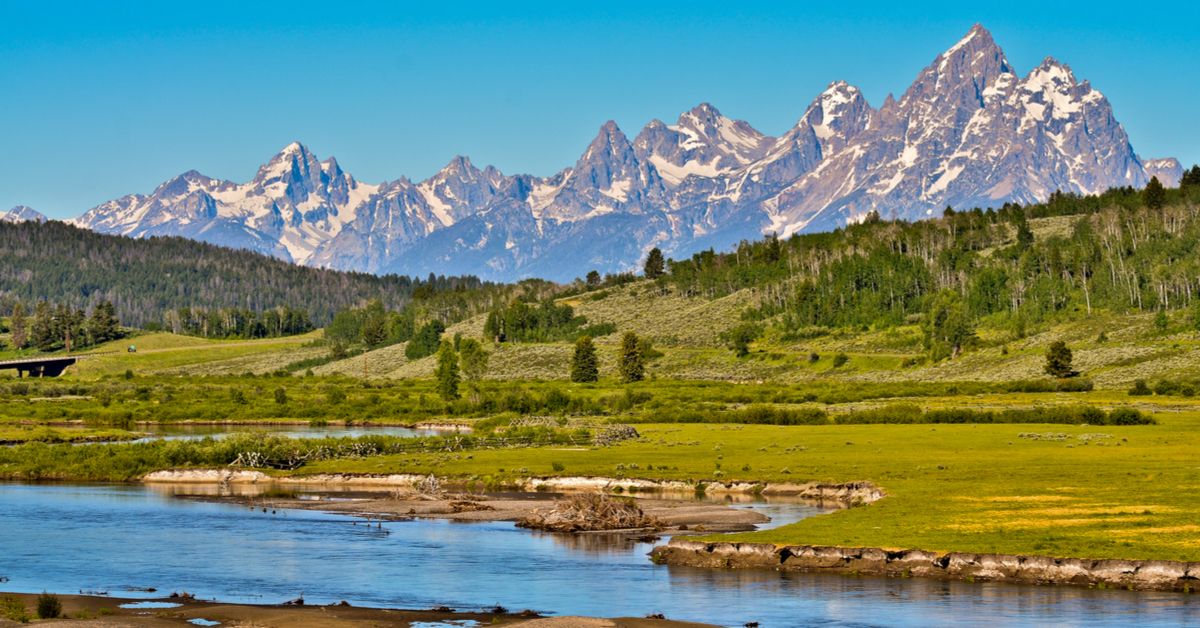Hidden Falls is a region of northwestern Wyoming's Grand Teton National Park that includes a large rocky outcrop used (in part) by climbers and guides who train for the dangerous ascent up Grand Teton Mountain.
Grand Teton National Park is directly south of, and connected to, Yellowstone National Park. On 10 July 2018, the Jackson Hole News and Guide reported that mountain guides had noticed new and growing cracks in the area:
“Yesterday, Exum guides noticed cracks in the rocks,” Teton park spokeswoman Denise Germann said. “They communicated that to rangers this morning, and when they went to investigate they realized it had actually gotten bigger and expanded.”
The crack is about 100 feet long, she said, and runs horizontally along a rock wall that’s at least 100 feet tall.
As a result of this discovery, rangers temporarily closed Hidden Falls and a neighboring area, citing safety concerns “that a fissuring rock wall could tumble down onto onlookers”:
“The whole area is prone to geological activity,” Germann said, “but this was a very notable difference.” Park officials are searching for a National Park Service expert they can ship in to assess the risk of the potentially unstable rock wall.
Yellowstone National Park sits above a volcanically active magma chamber responsible for many of the most notable features of the region, as well as the occasional eruption. While Grand Teton National Park does not lie above this chamber, Yellowstone’s activity is also responsible for a constantly shifting ground and myriad daily earthquakes in the broader region, all of which could contribute to the fracturing of a massive cliff face in the general area.
For online sites looking for easy ad revenue, the topic of the Yellowstone super eruptions has been a gold mine — albeit it a factually challenged one. Any mention of Yellowstone can and will be turned into viral claims of the coming apocalypse.
The Daily Mail, for example, in their reporting of a 100-foot horizontal crack in a rock ran with a headline sure to remind viewers of the fact that Yellowstone is a supervolcano: "Rock fissure sparks URGENT closure at Grand Teton National Park, just 60 miles from Yellowstone supervolcano."
The UK's Daily Express tabloid similarly hinted in their headline and lead that this park closure was an ominous warning: “Yellowstone Volcano latest: 100-FOOT fissure sparks URGENT park closure.” That story also opened with a suggestion of imminent catastrophe, stating that "A 100-foot fissure has opened up in the Grand Teton National Park — not far from the potentially catastrophic Yellowstone volcano."
The park closure was “urgent” because park rangers did not want climbers to be crushed by falling rocks, not because they feared an imminent volcano super-eruption. As we have reported previously, the likelihood of a large scale, globally disruptive super-eruption's occurring at Yellowstone Park in our lifetimes is exceedingly low, and that event would be presaged by warning signs that the United States Geological Survey (USGS) and other entities are constantly monitoring.
Yellowstone’s magma chamber, most geologists agree, currently does not contain the volume of magma needed for such a large-scale eruption, and the process of replenishing that chamber occurs on slow timescales. The USGS consider the risk of a caldera-forming apocalypse at Yellowstone in the next couple of thousand years to be “exceedingly low.”
In short, if a volcanic super-eruption at Yellowstone Park were imminent, the signs would be much clearer than a 100-foot crack in a rock wall.
